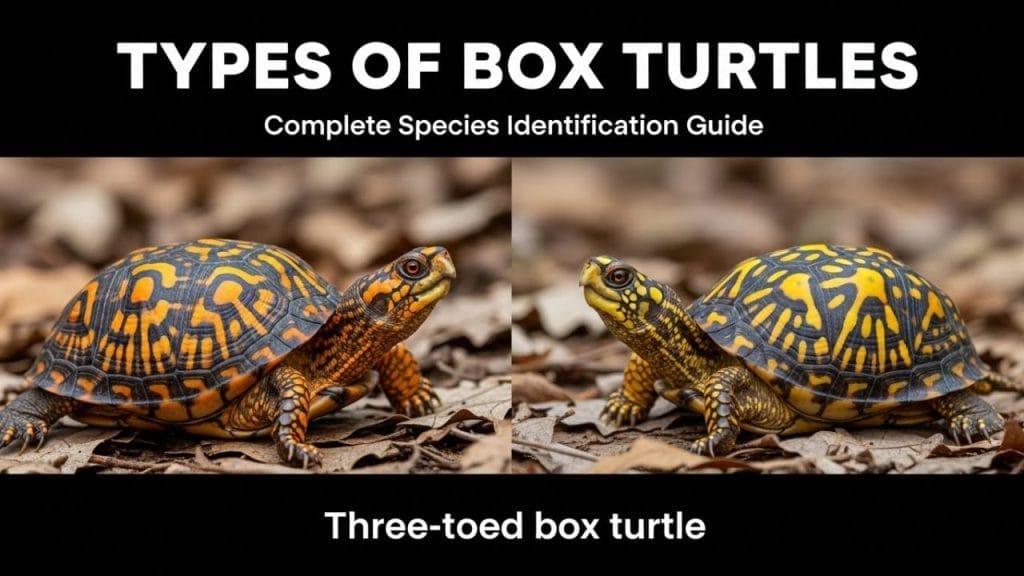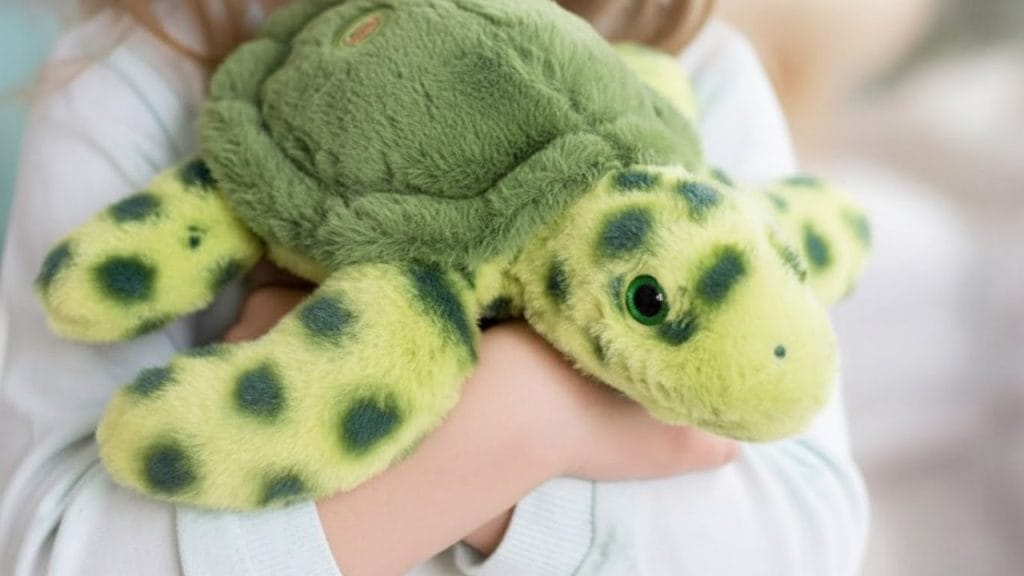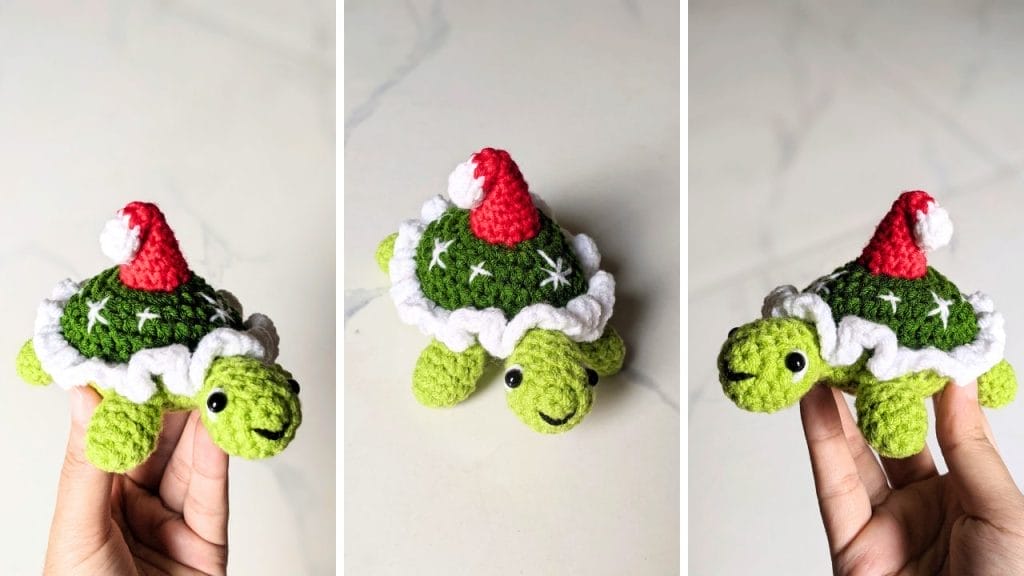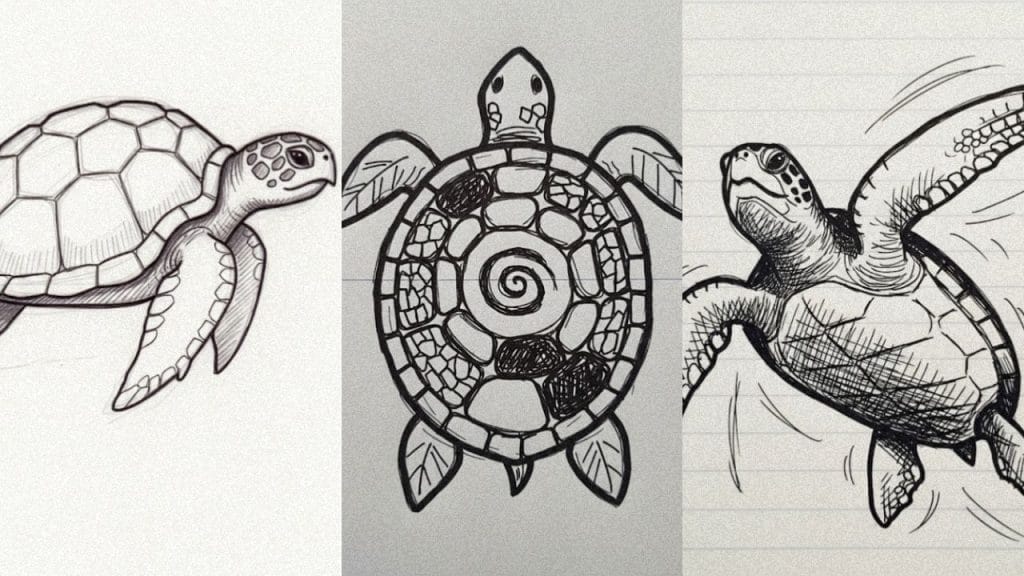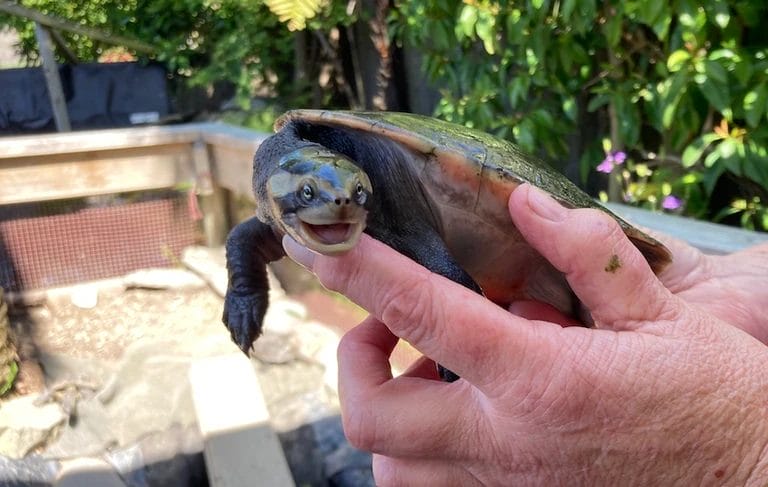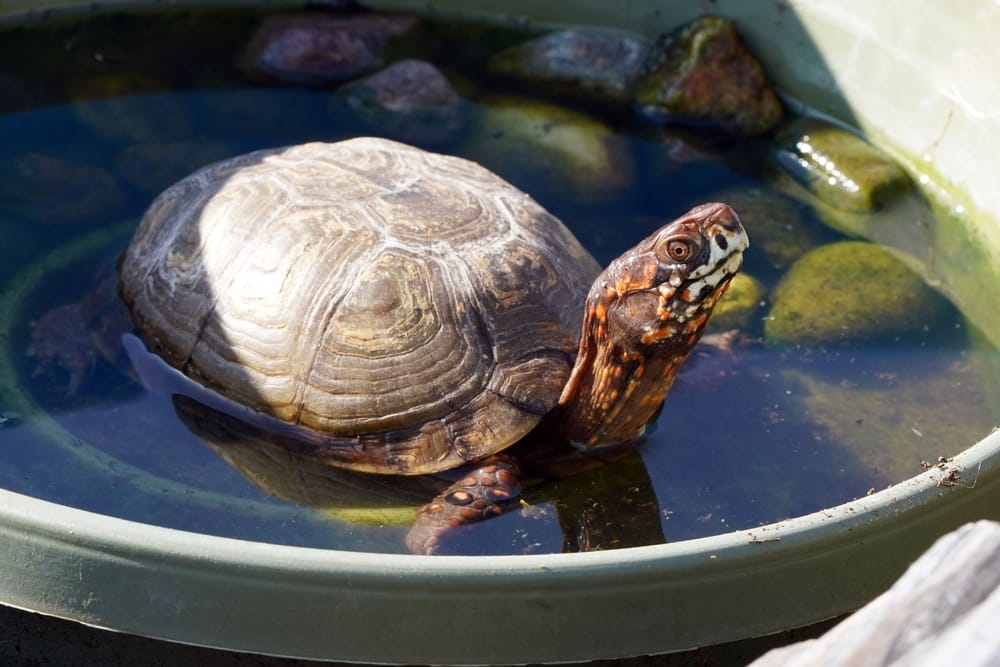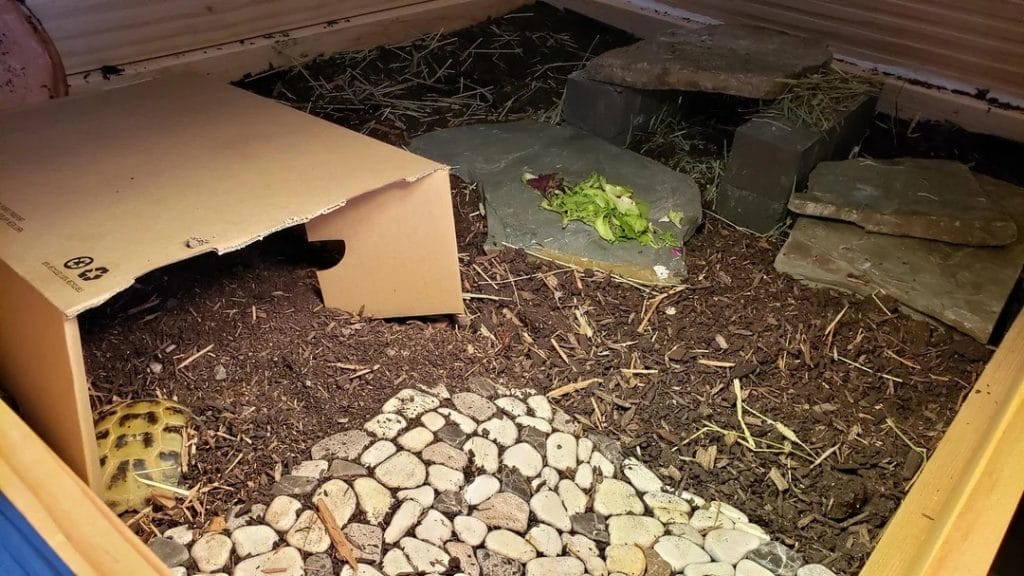How To Provide Calcium To Turtles?
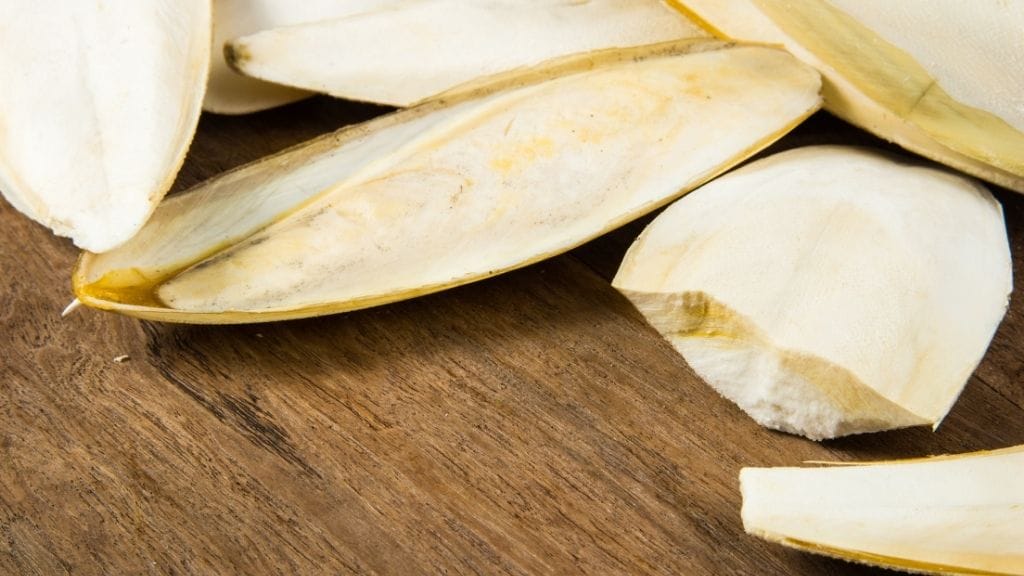
This post was created with help from AI tools and carefully reviewed by a human (Muntaseer Rahman). For more on how we use AI on this site, check out our Editorial Policy.
Your turtle’s shell isn’t just a pretty house – it’s literally their skeleton on the outside.
And just like your bones need calcium to stay strong, your turtle’s shell and internal bones are completely dependent on getting enough of this crucial mineral.
Miss the mark on calcium, and you’re looking at serious health problems that’ll make you wish you’d paid attention from day one.
The Scary Truth About Calcium Deficiency
Here’s what happens when turtles don’t get enough calcium – and trust me, it’s not pretty.
Metabolic Bone Disease (MBD) turns strong shells into rubber.
Your turtle’s body literally starts cannibalizing its own bones when calcium levels drop too low, leading to soft shells, broken bones, and deformed limbs.
Picture trying to protect yourself with a cardboard box instead of armor.
The symptoms sneak up on you like a bad horror movie. First comes decreased appetite and lethargy, then you’ll notice swollen jaw bones, difficulty walking, and in severe cases, muscle tremors and paralysis.
Some turtle owners describe their pet’s shell becoming so soft they could dent it with gentle pressure.
Young turtles get hit hardest.
Growing turtles are especially vulnerable because they’re building their skeleton from scratch. It’s like trying to construct a skyscraper with wet cement.
Wrong! It’s not just about the calcium in their food.

The UVB Light Connection Most People Miss
Plot twist: Your turtle could be eating calcium supplements all day and still develop MBD.
UVB light is the secret sauce that makes calcium work.
Without adequate UVB exposure, turtles can’t metabolize vitamin D3, which is essential for calcium absorption. Think of UVB light as the key that unlocks the calcium door.
Here’s the kicker – UVB light can’t penetrate glass, so placing your turtle near a window does absolutely nothing. You need special reptile UVB bulbs positioned 12-16 inches from your turtle.
Replace those bulbs every 4-6 months.
UVB bulbs degrade over time even when they still produce visible light. Using an old bulb is like wearing sunglasses and expecting to get a tan.
This Hilarious Turtle Book Might Know Your Pet Better Than You Do
Let’s be real—most turtle care guides feel like reading a textbook written by a sleep-deprived zookeeper.
This one’s not that.
Told from the snarky point of view of a grumpy, judgmental turtle, 21 Turtle Truths You’ll Never Read in a Care Guide is packed with sarcasm, sass, and surprisingly useful insights.
And hey—you don’t have to commit to the whole thing just yet.
Grab 2 free truths from the ebook and get a taste of what your turtle really thinks about your setup, your food choices, and that weird plastic palm tree.
It’s funny, it’s honest, and if you’ve ever owned a turtle who glares at you like you’re the problem—you’ll feel seen.
Water Calcium Blocks: The Lazy Turtle Owner’s Dream
These little turtle-shaped blocks are genius in their simplicity.
Dr. Turtle calcium blocks dissolve slowly in the water.
Made of 100% calcium sulfate and magnesium chloride, they provide calcium while conditioning the water. Just drop one in and forget about it for weeks.
Real turtle owners rave about them. “My turtle be nibbling on the calcium blocks. They are really easy to use..just drop them in,” says one Amazon reviewer.
Another reported: “Super easy and a great price. Now I can worry less about his shell health.”
One block per tank, regardless of size.
The blocks last anywhere from a few weeks to several months depending on water temperature and your turtle’s nibbling habits.
Dusting Food: The Shake and Bake Method
For land turtles or supplementing aquatic turtle diets, calcium powder is your friend.
Use the “shake and bake” technique. Place insects or vegetables in a plastic bag with calcium powder and shake to coat. It’s like seasoning your food, except the seasoning might save your turtle’s life.
Stick to calcium without D3 for regular use.
Plain calcium powder 2-3 times per week is sufficient since your turtle should be making vitamin D3 from UVB exposure. Too much supplemental D3 can cause other problems.
The weirdest part? Some turtle owners soak calcium powder into pellets, let them dry, then feed them to ensure the calcium doesn’t wash off in water.

Natural Calcium-Rich Foods That Actually Work
Mother Nature provides some excellent calcium sources if you know where to look.
Vegetables That Pack a Calcium Punch
| Vegetable | Why It’s Great |
|---|---|
| Dandelion Greens | High calcium content and turtles love the taste |
| Collard Greens | Low oxalates mean better calcium absorption |
| Kale | Shows similar calcium absorption to milk |
| Mustard Greens | Excellent calcium without absorption blockers |
Avoid the calcium thieves. Swiss chard, spinach, and beet greens contain oxalates that bind to calcium and prevent absorption. It’s like trying to drink water through a clogged straw.
These calcium-rich vegetables can also be incorporated into homemade turtle food recipes like nutrient-dense jello cubes that make feeding easier while ensuring proper calcium intake.
Protein Sources With Built-In Calcium
Whole small fish are the jackpot.
Fathead minnows and golden shiners provide fool-proof calcium because they contain bones and have been raised on natural diets. It’s like giving your turtle a complete vitamin in fish form.
Cuttlebone from the bird section works wonders.
Remove the hard backing and drop chunks in the tank – when turtles want calcium, they’ll nibble on it. Pro tip: Young turtles are less interested in cuttlebone, but older turtles often munch on it regularly.
Some turtle owners get creative: “Have you tried soaking it in tuna juice?” suggests one forum user for picky eaters.
Commercial Pellets: The Foundation Diet
High-quality turtle pellets should be your base. Many commercial turtle diets contain added calcium and are designed to provide balanced nutrition. Look for brands that specifically mention calcium supplementation on the label.
Professional formulations contain 1.5% calcium with proper calcium-to-phosphorus ratios. It’s like having a nutritionist formulate every meal.
Don’t rely on pellets alone. Commercial foods should not be used to the exclusion of whole fish and vegetables. Variety keeps both you and your turtle from getting bored.

The Calcium-to-Phosphorus Ratio Game
Here’s something most turtle guides skip over but veterinarians obsess about.
Turtles need a 2:1 calcium-to-phosphorus ratio. When this balance gets thrown off, bones break down to provide essential calcium for metabolic processes. Too much phosphorus essentially steals calcium from your turtle’s bones.
When evaluating human foods you might share with your turtle, check our human food safety guide to understand which foods help or harm this critical ratio.
Most natural turtle diets are backwards. Most reptile diets are naturally very low in calcium but very high in phosphorus. This is why supplementation isn’t optional – it’s essential.
Special Considerations for Different Life Stages
Growing Turtles and Egg-Laying Females
Young turtles are calcium vacuum cleaners. Fast-growing or reproducing animals are the most susceptible to calcium deficiency. Think of them as calcium-burning race cars.
Pregnant females need extra everything. Egg-laying females have specific calcium needs beyond normal maintenance. Those eggs don’t shell themselves.
Baby turtles in particular need careful attention to both calcium and overall nutrition—follow our complete baby turtle feeding guide to get all the fundamentals right from day one.
The Hatchling Shell Reality Check
Baby turtle shells are supposed to be slightly flexible. Hatchlings naturally have shells that are a little pliable, and this hardens as they get older. Don’t panic if your baby turtle’s shell isn’t rock-hard.
But if the shell stays soft past the first year or becomes increasingly flexible, that’s your red flag.

Common Calcium Mistakes That Backfire
Over-supplementation can be just as dangerous.
Too much vitamin D3 and minerals can cause other serious health problems. It’s like the difference between taking one aspirin and downing the whole bottle.
Forgetting about the phosphorus side of the equation.
Some turtle owners load up on calcium while feeding high-phosphorus foods like meat or fish without bones. You’re essentially working against yourself.
Assuming all greens are created equal.
That beautiful spinach might look healthy, but only about 5% of spinach calcium gets absorbed due to oxalates.
Red Flags: When to Panic
Watch for these warning signs that scream “calcium emergency”:
- Shell becoming soft or dented easily
- Swollen jaw or limb bones
- Difficulty walking or dragging limbs
- Muscle tremors or twitching
- Loss of appetite and lethargy
In severe cases where calcium becomes dangerously low, reptiles develop muscle tremors, paralysis, and can lead to death. This isn’t something you wait and see about.

Complete Vitamin & Mineral Guide (Beyond Calcium)
While calcium is critical, turtles need a full spectrum of vitamins and minerals for optimal health. Here’s your complete guide to essential nutrients.
Essential Vitamins:
Vitamin A (Retinol)
Why it matters: Supports eye health, skin shedding, immune function, and respiratory health. Deficiency causes swollen eyes, lethargy, and respiratory infections—one of the most common turtle health issues.
Best sources:
- Dark leafy greens (collard greens, turnip greens, kale)
- Carrots (grated or shredded)
- Sweet potato
- Red bell peppers
- Squash
How much: Offer vitamin A-rich foods 2-3x per week. Avoid over-supplementation—too much causes toxicity.
Warning: Don’t confuse with beta-carotene supplements. Turtles convert beta-carotene to vitamin A naturally through food.
Vitamin D3 (Cholecalciferol)
Why it matters: Works hand-in-hand with calcium. Without D3, turtles can’t absorb calcium properly, leading to metabolic bone disease (MBD).
Best sources:
- UVB lighting – The #1 source! Turtles synthesize D3 through basking under UVB rays
- Fatty fish (salmon, sardines)
- Commercial turtle pellets (fortified)
How much: 10-12 hours of UVB exposure daily (10-12% UVB bulb for aquatic turtles). Replace UVB bulbs every 6-12 months even if they still emit light.
Pro tip: Natural sunlight is best when weather permits (not through glass).
Vitamin E (Tocopherol)
Why it matters: Antioxidant that protects cells, supports immune function, and maintains healthy skin/shell.
Best sources:
- Leafy greens (dandelion, mustard greens)
- Small amounts of seeds (sunflower)
- Whole fish (with organs)
How much: Naturally provided through varied diet. No need to supplement separately.
Vitamin K
Why it matters: Essential for blood clotting and bone metabolism.
Best sources:
- Dark leafy greens (kale, collards, parsley)
- Broccoli
- Algae and aquatic plants
How much: Deficiency is rare. Include leafy greens 3-4x per week.
B-Complex Vitamins (B1, B2, B6, B12)
Why they matter: Support metabolism, energy production, nerve function, and red blood cell formation.
Best sources:
- Whole fish (provides B12)
- Insects (crickets, mealworms provide B vitamins)
- Commercial pellets (fortified)
- Organ meats (occasional)
How much: Varied diet provides adequate B vitamins. Deficiency is uncommon.
Essential Minerals:
Phosphorus
Why it matters: Works with calcium for bone and shell health. The calcium-to-phosphorus ratio is critical—aim for 2:1 (twice as much calcium as phosphorus).
Best sources: Naturally present in most proteins and vegetables
Warning: Too much phosphorus blocks calcium absorption. Avoid high-phosphorus foods like:
- Spinach (also has oxalates)
- Iceberg lettuce (low nutrition anyway)
- Excessive meats
How to balance: Use calcium powder to offset phosphorus in protein-rich meals.
Magnesium
Why it matters: Supports muscle function, nerve signaling, and shell development. Works alongside calcium.
Best sources:
- Pumpkin seeds (tiny amounts)
- Leafy greens
- Whole prey items
How much: Deficiency is rare with varied diet.
Iron
Why it matters: Essential for oxygen transport in blood and energy metabolism.
Best sources:
- Insects (crickets, roaches)
- Dark leafy greens
- Liver (occasional treat)
How much: Naturally obtained through diet. Avoid iron supplements unless prescribed by a vet.
Iodine
Why it matters: Thyroid function and metabolism. Deficiency causes goiter (enlarged thyroid).
Best sources:
- Aquatic plants (for aquatic turtles)
- Occasional saltwater fish
- Seaweed (small amounts for variety)
How much: Rare deficiency. Don’t over-supplement—too much iodine is harmful.
Zinc
Why it matters: Immune system support, wound healing, shell growth.
Best sources:
- Whole prey (fish, insects)
- Pumpkin (flesh and seeds)
- Commercial turtle pellets
How much: Naturally provided through varied diet.
Practical Supplementation Guide:
What to supplement:
- Calcium (with D3 for indoor turtles) – 3-4x per week
- Multivitamin powder – 1x per week maximum
What NOT to supplement separately:
- Individual B vitamins (overdose risk)
- Vitamin A capsules (causes toxicity)
- Iron (dangerous in excess)
Best practice:
- Use a reptile-specific multivitamin like Rep-Cal or Zoo Med
- Rotate between calcium and multivitamin dustings
- Never use human vitamins
Signs of Vitamin/Mineral Deficiency:
| Deficiency | Symptoms |
|---|---|
| Vitamin A | Swollen eyes, respiratory infections, skin lesions |
| Vitamin D3 / Calcium | Soft shell, pyramiding, lethargy, deformed limbs (MBD) |
| Vitamin E | Muscle weakness, poor immune response |
| Iodine | Swollen neck (goiter), lethargy |
| Phosphorus excess | Soft shell despite calcium intake |
If you notice any of these symptoms, consult a reptile veterinarian immediately.
The Golden Rule:
Variety is the best supplement. A diverse diet of proteins, vegetables, aquatic plants, and quality pellets provides nearly all nutrients naturally. Use powdered supplements as insurance, not replacements for good nutrition.
The Bottom Line: Make Calcium Non-Negotiable
Your turtle depends on you to get this right because they can’t exactly run to the store for supplements.
Set up a three-pronged calcium attack:
Quality UVB lighting (replaced every 6 months), calcium-rich foods or supplements 2-3 times per week, and commercial pellets with balanced calcium content. It’s like a insurance policy for your turtle’s skeleton.
Monitor your turtle’s shell regularly.
A healthy shell should be firm and smooth – any softness or abnormalities can indicate calcium deficiency. Your hands are better than any expensive diagnostic equipment for catching problems early.
The calcium game isn’t complicated, but it’s absolutely critical. Get it wrong, and you’re looking at expensive vet bills and a suffering turtle. Get it right, and your shelled friend will thank you with decades of healthy, active life.
Because honestly, there’s nothing sadder than a turtle whose own shell has become their enemy.

About Author
Muntaseer Rahman started keeping pet turtles back in 2013. He also owns the largest Turtle & Tortoise Facebook community in Bangladesh. These days he is mostly active on Facebook.


